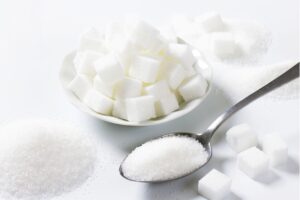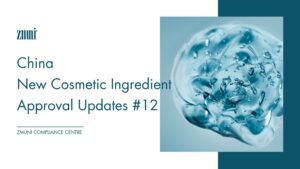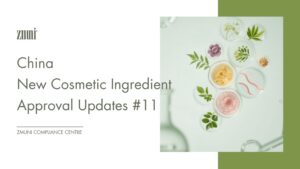+86 571 8659 2517
+86 180 5841 8258
info@zmuni.com

On July 2, 2025, the National Health Commission of China officially approved 20 substances as "Three-New Food", including 5 new food ingredients, 9 new food additives, and 6 new food-related products. Among the highlights is the long-anticipated D-allulose, a rare sugar gaining popularity in global low-calorie and functional food markets, marking China's first official approval of D-allulose. The details of the new food ingredients and additives are as follows: New food ingredients: No. Name in EN Remark 1 D-allulose/D-psicose Process 1: Fermentation using Escherichia coli K12 MG1655 AS10 (from glucose/sucrose); synthetic biology-based; includes

From June 21 to June 30, 2025, 4 new cosmetic ingredients were notified with the China National Medical Products Administration (NMPA). The technical requirements for the 4 new cosmetic ingredients mentioned above have not been disclosed, and they have not yet entered the safety monitoring period. HYDROXYTYROSOL Hydroxytyrosol is a phenylethanol derivative and a phytochemical compound found in olive oil and olive leaves derived from the olive tree. It possesses good lipid and water solubility, along with strong antioxidant activity. According to CosIng, its manufacturing process is generally described as organic synthesis. It is classified as a skin conditioning agent

On June 19, 2025, China's General Administration of Customs (GACC) released its list of non-compliant imported food products for May 2025. According to the list, a total of 428 batches from 38 countries and regions were denied entry — representing a 32% increase from the previous month and a 24% rise year-on-year. The number of non-compliant food imports continues to rise. The majority of non-compliant imports came from the U.S. (20.3%), Hong Kong SAR, China ranked second (17.8%), Japan (14.3%), and Indonesia (6.5%). Key reasons for import rejections included: - Non-compliance with national food standards - Unqualified labeling - Discrepancy between cargo and certificates - Registration

On June 24, 2025, China National Institute for Food and Drug Control (NIFDC) released two guidelines for new cosmetic ingredients, including: Guidelines for Research and Determination of Safe Use History of New Cosmetic Ingredients (Trial) Applicable NCI notification situations: situation 3 & situation 4, referring to ingredients that can provide sufficient evidence of having been safely used in marketed cosmetics for more than three years. Key Highlights: If the marketed cosmetic is not manufactured by the NCI registrant or notifier, the source of information must be clarified and proper authorization obtained. Continuous sales of the

On June 24, 2025, China National Medical Products Administration (NMPA) issued an important announcement regarding significant adjustments for the Inventory of Existing Cosmetic Ingredient in China (IECIC). Detailed adjustments are as follows: 1. Introducing Two-tier Inventory System List I includes revisions and improvements to the IECIC 2021. List II covers new cosmetic ingredients that have completed their three-year safety monitoring period and are now officially included in IECIC. *Background: In accordance with the Cosmetics Supervision and Administration Regulation, cosmetic ingredients that have completed the three-year safety monitoring period after being registered or notified as new cosmetic ingredients—without any safety

On June 24,2025, China's National Institutes for Food and Drug Control (NIFDC) has released nine draft cosmetic standards for public consultation. These include the General Principles for Physicochemical Testing Methods, among others, and aim to further improving the cosmetic technical standards. The public consultation period will remain open until July 15, 2025. Detailed standards as follows: General Principles for Physicochemical Testing Methods (Draft fot Comment) Determination of Cannabidiol (CBD) and Other 5 kinds of Components in Cosmetics (Draft fot Comment) Skin Sensitization: Local Lymph Node Assay: BrdU-Flow Cytometry Method(LLNA:BrdU-FCM)(Draft fot Comment) Toxicokinetics (Draft fot Comment) General Technical

From June 13 to June 20, 2025, 8 new cosmetic ingredients were notified with the China National Medical Products Administration (NMPA). The technical requirements for the 8 new cosmetic ingredients mentioned above have not been disclosed, and they have not yet entered the safety monitoring period. Two NCI Notified by Foreign Companies Notification 20250070 This ingredient is submitted by NeoPharm Co., Ltd., a South Korean company established in 2000. The company has long been dedicated to research and product development in the field of skin barrier health, focusing on common concerns such as dry and sensitive skin by providing science-based

On June 10, 2025, China's State Administration for Market Regulation (SAMR), in collaboration with the Cyberspace Administration of China (CAC), released the draft Administrative Measures for Supervision of Live-Stream E-commerce for public comment. The proposed regulation aims to further standardize market order, protect the legitimate rights and interests of all stakeholders, and promote the healthy development of the live-stream e-commerce sector. Comments are welcomed until July 10, 2025. The key provisions of the draft regulation are as follows: Refining the responsibilities and obligations of live-stream e-commerce platform operators. Clarifying the duties of livestream room operators, service agencies for livestream marketing
+86 571 8659 2517
+86 180 5841 8258
info@zmuni.com